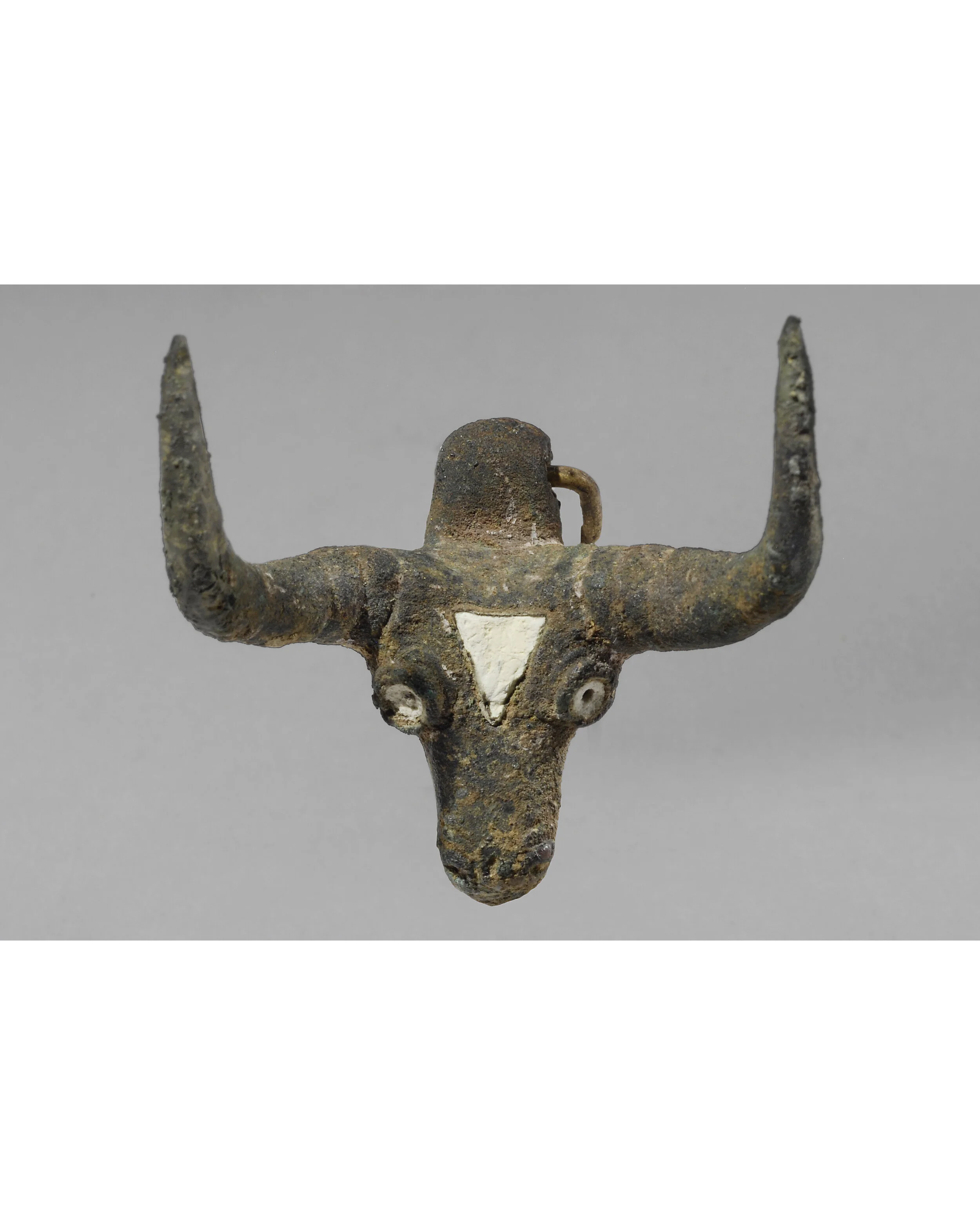Ancient Mesopotamian Pair of Bitumen Bovine Feet


Ancient Mesopotamian Pair of Bitumen Bovine Feet
Mesopotamian, late 2nd millennium B.C.
Bitumen
H: 10.9
Serial:5752
Provenance: Monique de Sancey collection, Switzerland, imported to the US in 1996
This beautifully modeled and carved pair of bovine hind feet is a wonderful illustration of the combination of naturalism and stylization that characterizes the best of Mesopotamian art. The anatomical structure of the hoof and hind leg has been faithfully reproduced, and the veins are carved in relief to exaggerate the pattern that they trace over the surface of the leg. The hooves are carefully leveled so that they rest flat against the ground, and the tops of the legs have been drilled with holes for the insertion of pins or tenons to attach them to the body of the animal. The original object was probably a statue or vessel in the shape of a bull or caprid that was either completely made of bitumen parts, or of composite materials. Similar objects have been found at the royal burials at Susa, one of the most powerful Mesopotamian city states of the third to second millennium B.C.
Bitumen was a naturally occurring resin, found in veins in the earth in a liquid or semi-solid state that would harden when fired. These feet appear to be in near original condition, with no surface cracks or chips. Being an organic material, it is extremely rare to find bitumen objects in such a remarkable state of preservation.









